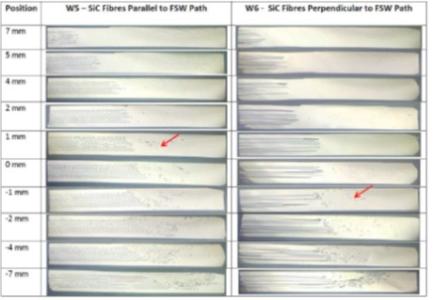Friction Stir Welding of Titanium Silicon Carbide Composites for Xenon Tanks Applications

The objective of the proposed activity is to develop a suitable Friction Stir Welding process ideal for application on Titanium Silicon Carbide composites, which will be used for Xenon tanks applications, allowing manufacturing tanks that are less than half the weight of the equivalent current monolithic design, while maximizing the welding performances and reducing the manufacturing steps and costs to a minimum.
Over 120 spacecraft presently use electric thruster systems. They are now being used to provide most of the post-LEO propulsion demands on geosynchronous missions. The availability of practical, high-specific-impulse electric thrusters with long life, and the development of electrical power-systems required to sustain them, has resulted in extremely rapid growth in the applications of this technology. ESA has engaged in programmes (e.g. SGEO, AlphaBus) where Xenon electric propulsion sub-systems are used to perform all orbital maneuvers (on SGEO) and inclination and eccentricity control for North/South station keeping as well as unloading of reaction wheels (on AlphaBus). Xenon storage pressure vessels with unique characteristics are needed. These tank must be high performance, light weight, and designed to withstand severe launch and operational loads and are normally manufactured with EB welded and composites overwrapped Titanium shells.Titanium Silicon Carbide (TiSiC) is a Titanium alloy reinforced with continuous Silicon Carbide fibers aimed at high-end applications (e.g. aeronautical and petrochemical). The advantage of ceramic fiber composites is that they can be stronger and stiffer than the equivalent carbon structures. Silicon carbide fibers used to reinforce TiSiC are 4 times stronger and 5 times stiffer than carbon fibers offering the possibility of significant weight savings. Fiber reinforced Titanium Matrix Composites (TMC) meet or exceed the performance of high strength steel, are corrosion resistant and are 30% to 70% lighter than conventional metal parts, with excellent fatigue properties and providing crack arrest capabilities thanks to fiber bridging. A small scale Xenon tank demonstrator has been successfully manufactured and tested showing promising mass savings and performances, however it has highlighted difficulties related to welding aspects: traditional fusion welding techniques have a detrimental impact on the fibers/metal interfaces. Solid state welding processes such as Friction Stir Welding (FSW) is considered to be the most significant development in metal joining in decades and is adopted worldwide in a wide range of applications including aerospace primary structures. It allows joining materials in the solid phase without reaching the melting point therefore leading to excellent mechanical and fatigue crack propagation properties (comparable with the base material characteristics). Since with the FSW process the joint takes place in the solid phase, very little heat is developed resulting in a very small Heat Affected Zone (HAZ), with minimal distortion and minimal residual stress, making it the ideal welding process for fiber reinforced materials: the non-reinforced area (need for performing the weld) with be reduced to minimum and its performances maximized thanks to the use of FSW.The activity will be divided in 3 phases:- Phase 1: Identification of the most suitable TiSiC material composition and characterization of mechanical, fracture mechanics, corrosion and stress-corrosion cracking properties.- Phase 2: Development, characterization and validation of a FSW process and tooling system able to weld the identified TiSiC reinforced material, starting from sheets up to formed shells.- Phase 3: Characterization of the mechanical, fracture mechanics, corrosion and stress-corrosion cracking properties in the performed FSW TiSiC joints.
